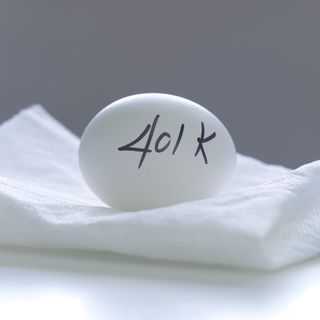

Target-date funds have become extremely popular. These funds are frequently the default investment choice in 401(k) plans. Therefore, your money’s automatically directed to them, unless you choose otherwise. The Investment Company Institute found that 50% of all 401(k) plan participants had some money stashed in a target-date fund at the end of 2014.
There are professional money managers who decide where the investments go in target-date funds. They decide how much of the portfolio should be in stocks, bonds, or other assets and these managers choose which funds to buy. They will adjust the holdings to make the portfolio more conservative, as you get older. Each fund family follows what is called a glide path for its series of target-date funds. This path will change the mix in stocks and bonds over time. After these funds hit their target year, some continue to adjust the stock-bond mix—usually for another 10 to 20 years—but some will stop all adjusting. That’s the difference between a target-date series that shifts through retirement and one that shifts to retirement.
The issue for retired investors is that target-date funds may not be nimble enough. Look at these reasons to review your target-date fund holdings when you retire.
Fund has a “to” retirement glide path. Most target-date series follow a “through” retirement glide path. However, if you have a series with a “to” glide path that ends at retirement, you need to assess how the portfolio is split between stocks and bonds, so it lines up with your need for return and your risk tolerance. The basic idea of a target-date series that glides “to” retirement, is that you’ll sell your shares in the fund when you retire and move the money into an IRA. You’ll then have the freedom to invest in other assets. But investors shouldn’t to be too conservative in retirement. It is important to keep some growth to maintain your spending.
A glide path may no longer fit. The stock-bond divide varies among different series of funds throughout the glide path. It’s even more so in the post-retirement years. The typical 2015 portfolio has 40% of assets invested in stocks, but the range for all 2015 target-date funds stretches from 15% in stocks to close to 60%. Target-date funds are designed to be one-size-fits-all, but no one truly is actually a one-size-fits-all.
Consider a more tax-efficient withdrawal strategy. You can be strategic about which assets you sell to meet your cash needs, but that’s not an option if you have all your retirement money in a target-date fund. In those funds, the withdrawals are made proportionately, according to the portfolio’s prescribed allocation and across all of the fund’s assets. When it comes to retirement withdrawals, the investor doesn’t have the discretion over where those withdrawals come from.
Diversity. Vanilla is the predominant flavor in most target-date funds. Most of the money in target-date portfolios is divided between stocks, bonds and cash. That’s a challenge, especially with a low return outlook for both stocks and bonds. A customized approach to your portfolio in retirement, might allow added flexibility. You could hold more cash or invest in alternative investments that don’t move rigidly with stocks or bonds.
In addition, you don’t want too many eggs in any one fund family’s basket. You need to see if the funds are appropriate for you.
Reference: Kiplinger (April 7, 2017) “The Trouble with Target-Date Funds in Retirement”

